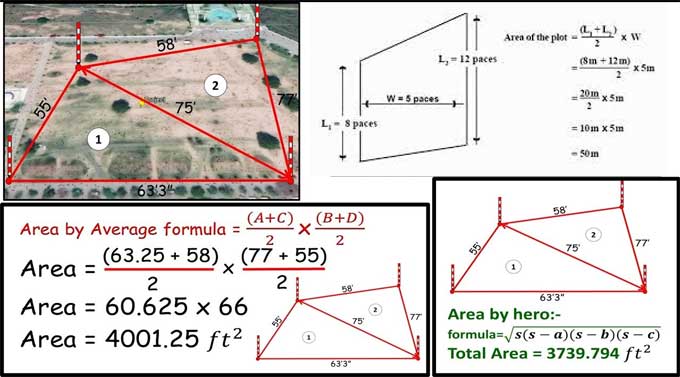
How to measure plot areas with different sizes
Before you begin a project, you must measure your lot to determine the size of your building. When you search public records, you can often find your lot size and property lines; however, the lines may have been defined by a hedge that has been cut down or a stream that has dried up. Simple methods exist for measuring plot areas.
Your purchase paperwork should include a description of the lot size if the deed or other documents do not specify it specifically. You can measure the lot size for free online if you have not bought the land you want to build on yet, and you cannot find it in public records.
Compute the Total Area of an Acre
A popular method of calculating the square footage of a property is to measure the length and width and multiply that number by the total.
To calculate your acreage, you will need to divide your square footage by the square feet in an acre, and the result is your total acreage. If your property is an odd shape, not a square or rectangle, and you cannot estimate your taxes on it, it can be more difficult to calculate.
Setback
Usually, when someone hears the term setback, they conjure up thoughts of obstacles. If you're building a house, the term has an entirely different meaning. Houses and other structures must be set back from a property line by the setback term.
It is possible, for instance, that your area requires home construction to be 25 feet away from the front property line, 5 feet on either side and 15 feet back.
As well as setbacks from streets and wetlands, setbacks can refer to areas where local government has determined shouldn't be developed or occupied by buildings. Lots with irregular shapes often follow different rules than those with perfect squares or rectangles.
If your plot of land does not allow you to build without violated setbacks, for example, you might be able to get a Variance on the setbacks. If possible, you need to obtain a variance from your local government before you begin building or property.
Construction Cost
Another essential step before you begin building is determining your water source and electrical connection. It would be best for you to contact your local utility companies to get an idea of how much it may cost you per month.
A project's total cost can vary depending on the conditions of the land you enter into a contract to purchase. If necessary, pylons may drive into bedrock, granite may be removed, or new soil may need to be brought in.
Ratio of Floor Area
You must determine your floor area ratio after you have measured your lot and determined the setback requirements. An area ratio is a difference between the building's floor and the land size the building sits on. The area of the building divides by the number of square feet of the lot.
Land Difference in Rural & Urban Areas
Because it gives you the ability to maximize your space in urban areas where space is at a premium, floor area ratios are especially important.
An owner of a 3,000 square feet townhouse in a large urban area could potentially add 1,000 square feet to their building if the maximum allowed floor area ratio is 4,000 square feet.
Wrapping it Up
If you are considering buying land for your home, you should consider its layout. The site will need to level if it is on a slope before the building can begin. Drive a few stakes around the perimeter of your property and collect soil samples for a soil test.
The most popular geological study is a soil test that reveals potential issues like expansive soil in pole-style structures.
To get more details, watch the following video tutorial.
Video Source: CE&T- Civil Engg & Technology


